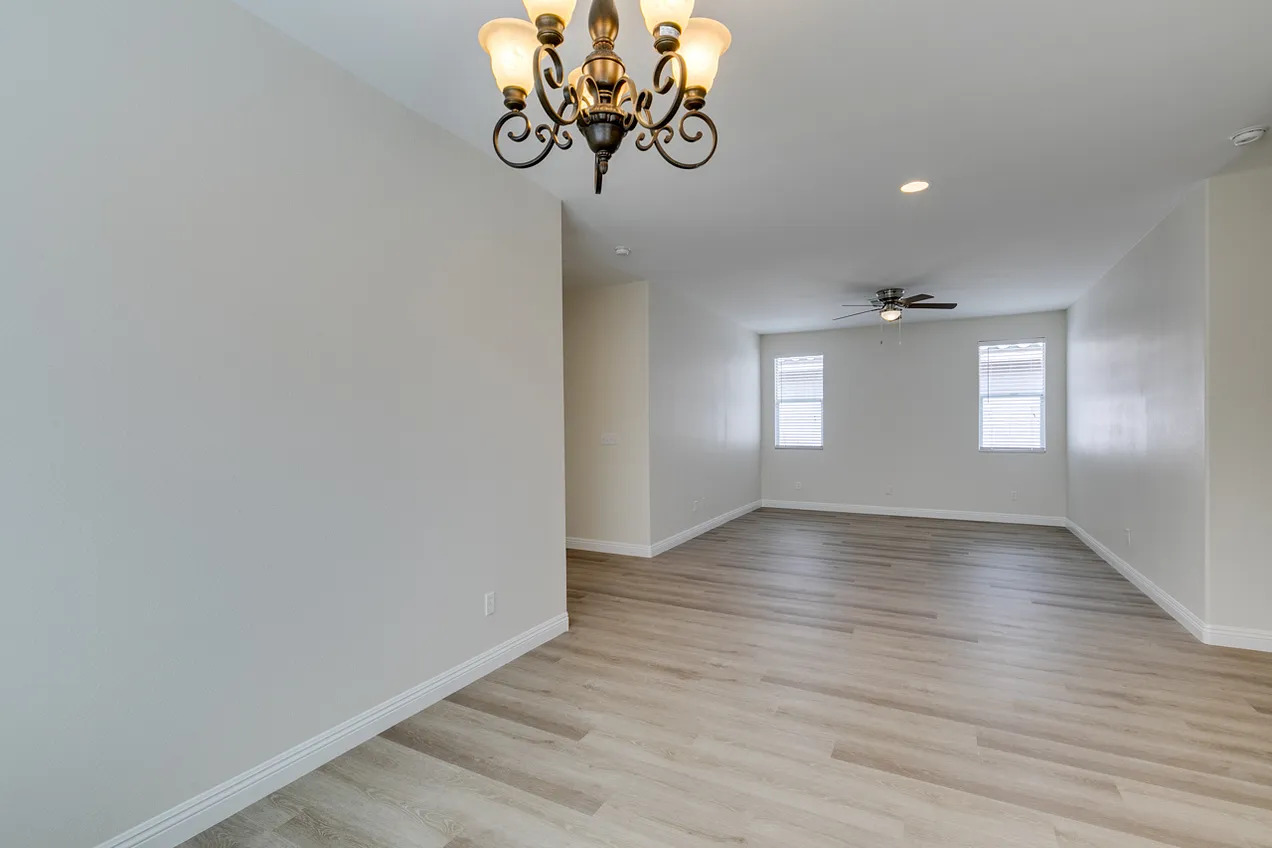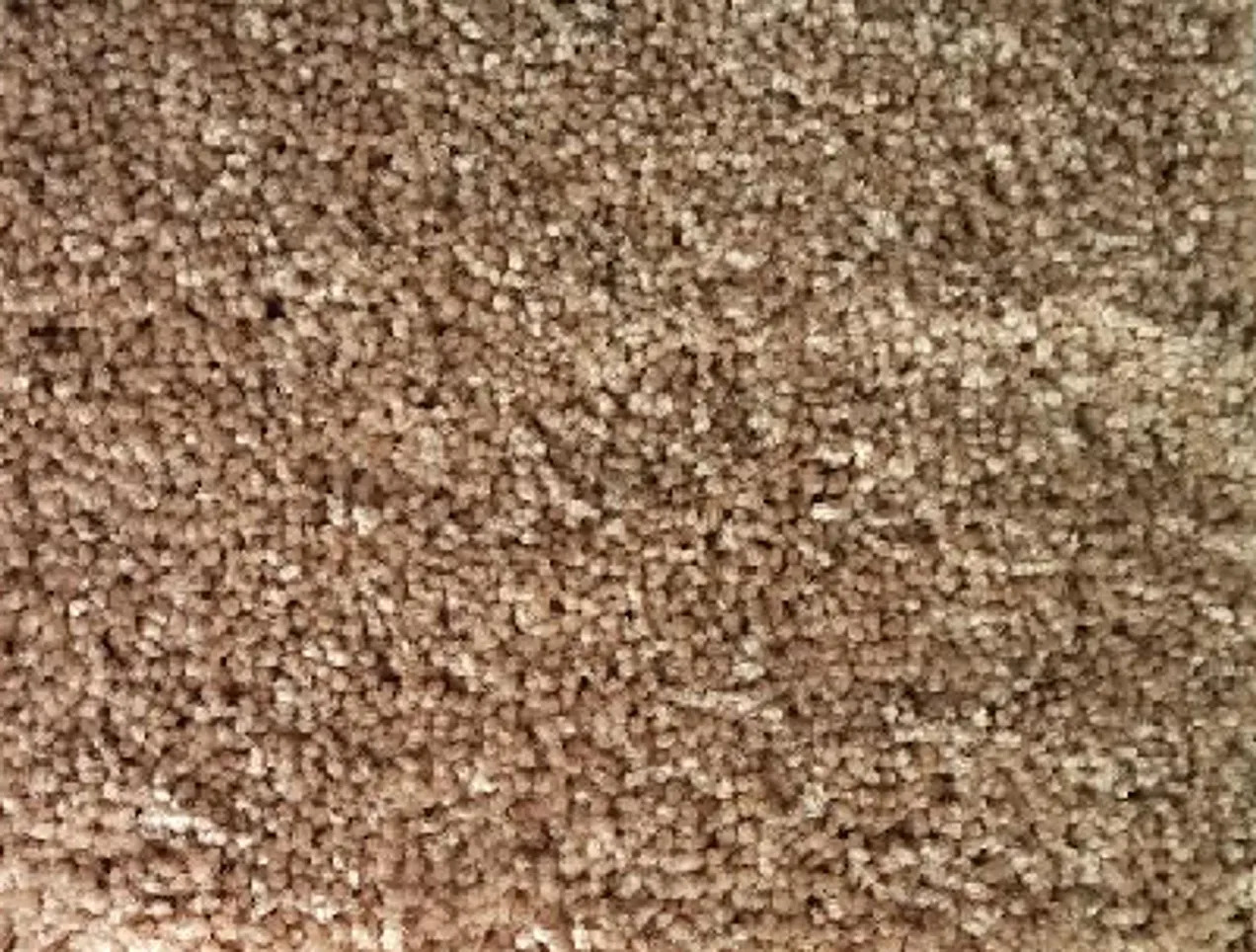
[Photo from one of our clients’ properties]
Consider the demographics of tenants, budget, and maintenance cost
When choosing flooring for rental properties, there is no universal solution. Factors such as the demographics of tenants, budget, and maintenance needs should be taken into account when making a decision.
General Advice
For wet areas like bathrooms and kitchens, I recommend installing water-resistant flooring such as Luxury Vinyl Plank (LVP) or tile. Commercial grade LVP is a great choice due to its waterproof, durable, and long-lasting properties. However, like laminate, it can be difficult to find the exact same color replacement, so it is wise to purchase extra in case it is needed in the future.
Tenant Demographic Considerations
The flooring type depends on the demographic and length of tenant stay. For example:
- For families with young children, I would install LVP in all the high-traffic areas (kitchen, dining, living room, hallways), as well as the wet areas, and commercial-grade nylon carpet in the bedrooms.
- If the target demographic is senior citizens, I would install LVP in the hallways and wet areas. Hard surfaces are easier to navigate for people with reduced mobility.
- To maximize profitability and minimize costs, I would install LVP flooring throughout the property for both short-term and mid-term rentals. The cost and time of each tenant turnover are essential factors for the financial success of short-term rentals.
Climate
If snow, rain, or sand is a major factor, carpeting may not be the best choice. Cleaning the carpet often would cause it to wear out quickly. Instead, use LVP.
Other Considerations
When you install tile on the second floor, you have to put concrete backer boards down first and lay the tile over that. The weight of the backer board plus the tile can exceed the load-bearing in some properties. LVP does not need any surface preparation, and it is lighter weight.
If you’re in an area prone to seismic activity or have issues with settling, tile can crack, resulting in sharp edges that can cause injury to tenants. In this case, I would use carpet or LVP.
Carpet
When I first began investing in real estate many years ago, I purchased carpets from large retail stores. After one of my tenants damaged the carpet on the stairs, I returned to the same store and ordered the same part number. However, when I installed it, I noticed that the color was noticeably different from the original carpet. My options were to either decrease the rent significantly to attract tenants (the tenant segment we target does not like multi-colored continuous carpets) or replace all the carpets. This was an expensive mistake that I did not repeat.
We now use commercial-grade nylon carpets. The color consistency has been excellent over the years. As a result, we can easily replace a hallway or a small area in a room, and the new carpet blends in perfectly with the original carpet. Below is the carpet we use.

Competition
Whenever you put a property on the market, the rent is driven by the current competition. If hard flooring is favored by potential tenants, and your competition all has hard flooring, you are almost forced to install hard flooring.
Payback Period
I had a situation where the property manager said we could get $2,000/Mo rent if we left the current wood laminate floors or we could get $2,300/Mo if we install LVP. The cost to install the LVP is $6,000. In such a case, you need to look at the payback period. In this example, the payback period is:
- Payback Period = $6,000/($2,300/Mo – $2,000/Mo) = 20 Mo or 1.6 years
Considering the short payback period, I would recommend installing the LVP. However, if the payback period were five years, I would likely not choose to install it.
Additional Carpet Considerations
- Polypropylene (or olefin) carpets wear badly and cannot be cleaned. Never use polypropylene.
- Patterned carpets, such as Berber, tend to be difficult to clean, show signs of wear quickly, and cannot be patched.
- Carpets can become stained or absorb odors easily, making them costly to clean or replace – a major concern for landlords.
- Carpets can trap allergens like dust mites, pollen, and pet dander, which can worsen respiratory issues like asthma. This is a concern for both tenants and landlords, as it can lead to health risks and potential legal repercussions.
- Deep-cleaning carpets can be challenging, especially if they’ve been neglected for a long time. It can be costly and may not always achieve the desired result of restoring the carpet to an acceptable state.
- Carpets can be a breeding ground for pests such as bed bugs, fleas, and small rodents. These can infest a property and create serious issues for both tenants and landlords.
- Carpets can be easily damaged by pet claws and accidents.
Laminate Considerations
We no longer use laminate and will generally replace it with LVP if cost-justifiable.
- Laminate is easy to damage, and susceptible to water damage.
- Although laminate flooring is generally durable, it may not withstand heavy foot traffic and scratches from furniture or pets, which can result in wear and tear over time.
- Laminate flooring is prone to scratches and scuffs, which can be difficult or impossible to repair.
- Laminate flooring may fade over time, particularly in areas that are exposed to direct sunlight.
- Laminate flooring should not be used in areas that are prone to moisture, such as bathrooms or kitchens, because it can be easily damaged by water.
Conclusion
The type of flooring best suited for a rental property depends on several factors. We have found that Luxury Vinyl Plank (LVP) and a multicolored, commercial-grade nylon carpet offer a great balance of attractiveness and durability.
Sign up for our free weekly blog article and monthly Las Vegas real estate investment market update. The monthly update includes a list of potential investment properties selected by our proprietary algorithm.






